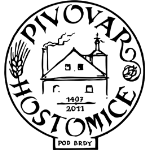Czech Lager
Czech lagers are generally divided by gravity class (draft, lager, special) and color (pale, amber, dark). The Czech names for these categories are svetlé (pale), polotmavé (amber), and tmavé (dark). The gravity classes are výcepní (draft, 710 °P), leák (lager, 1112 °P), and speciální (special, 13 °P+). Pivo is of course the Czech word for beer. The division into gravity classes is similar to the German groupings of schankbier, vollbier, and starkbier, although at different gravity ranges. Czech beers within the classes are often simply referenced by their gravity. There are often variations within the gravity-color groupings, particularly within the speciální class. The style guidelines combine some of these classes, while other beers in the Czech market are not described (such as the strong Czech Porter). This is not to imply that the categories below are the full coverage of Czech beers, simply a way of grouping some of the more commonly found types for judging purposes. Czech lagers in general are differentiated from German and other Western lagers in that German lagers are almost always fully attenuated, while Czech lagers can have a slight amount of unfermented extract remaining in the finished beer. This helps provide a slightly higher finishing gravity (and thus slightly lower apparent attenuation), slightly fuller body and mouthfeel, and a richer, slightly more complex flavor profile in equivalent color and strength beers. German lagers tend to have a cleaner fermentation profile, while Czech lagers are often fermented cooler (710 °C) and for a longer time, and can have a light, barely noticeable (near threshold) amount of diacetyl that often is perceived more as a rounded body than overtly in aroma and flavor [significant buttery diacetyl is a flaw]. Czech lager yeast strains are not always as clean and attenuative as German strains, which helps achieve the higher finishing gravity (along with the mashing methods and cooler fermentation). Czech lagers are traditionally made with decoction mashes (often double decoction), even with modern malts, while most modern German lagers are made with infusion or step infusion mashes. These differences characterize the richness, mouthfeel, and flavor profile that distinguishes Czech lagers.
IBU (International Bitterness Unit)
Abv (Alcohol By Volume)
SRM (Standard Reference Method)
